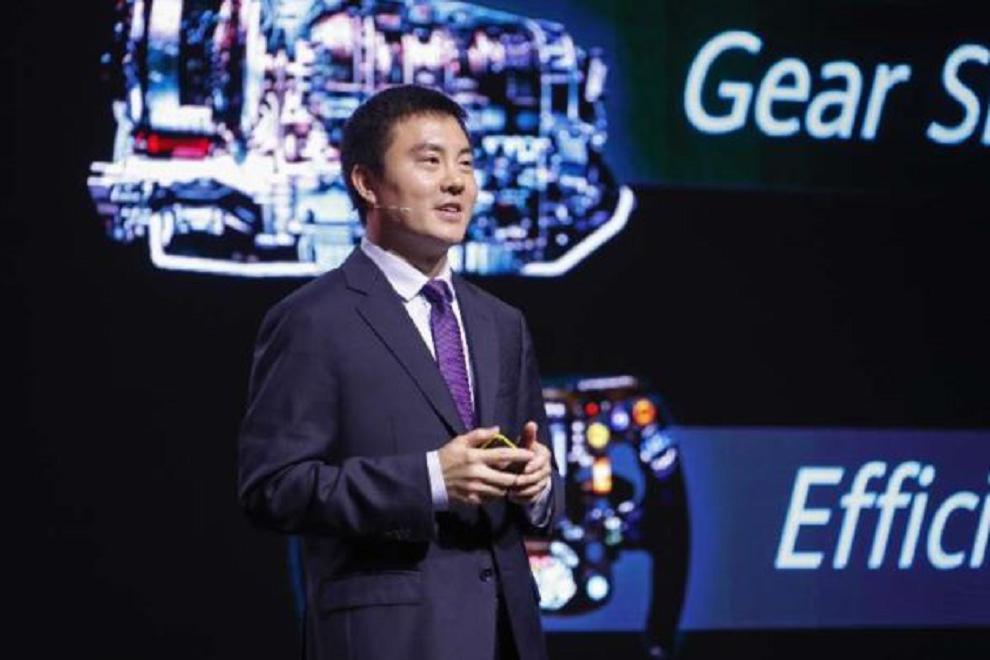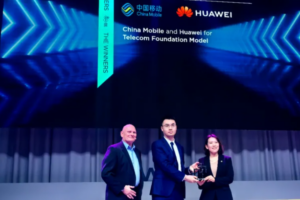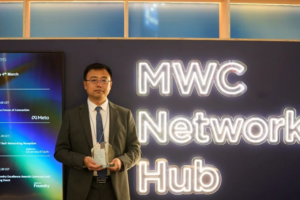At the 2019 Global Mobile Broadband Forum, Edward Deng, President of Huawei’s Wireless Solution, unveiled Huawei’s latest 5G full-series solution.
5G is rapidly accelerating towards full speed development. The world’s first wave of 5G commercial networks utilizing either C band or 2.6 GHz band have already been put into commercial operation. Now, 5G construction is expanding to FDD bands to ensure nationwide coverage and mmWave bands to increase capacity in hotspot areas.
“5G has come. Powerful networks deliver optimal user experiences. Advanced algorithms ensure optimal performance. Autonomous driving networks empower the most efficient operation and maintenance. This is what we aim to help operators achieve with 5G,” said Edward Deng.
Latest 5G Full-Series Solution for Optimal 5G Experience
Massive MIMO is key to expanding the limits of Shannon’s Law and achieving a significant capacity increase on mobile networks. Owing to persistent investment, now successfully converted into clear leadership of both hardware and software, Huawei has achieved extraordinary breakthroughs in multi-antenna technology. They enabled Huawei to pioneer the industry’s first commercial Massive MIMO products based on self-developed chips.
More than 40,000 pieces have been deployed across China and Japan, enabling operators to increase network capacity by three to five times over. Looking back, Huawei’s first generation Massive MIMO defined an engineering benchmark for large-scale multi-antenna solutions, representing one of the most important breakthroughs in the past decade.
Now, Massive MIMO has been broadly recognized as a standard configuration for 5G mobile networks. Its performance directly determines the quality of 5G networks.
To leverage a 5G carrier’s high bandwidth and overcome the coverage limitation of C-band, Huawei released its second generation 5G Massive MIMO, which was the first in the industry to support large-scale deployment. It was also the first of its kind to support a 200 MHz bandwidth and a transmit power of 200 W, while boasting a lighter weight and reduced dimensions.
Such excellent performance resulted in its shipment of over 400,000 units, and this figure is projected to reach 600,000 by the end of 2019. It provides operators with a crucial foundation to ensure Gbps experiences on 5G networks.
As 5G begins to see large-scale deployment all around the world, Huawei has released its third generation 5G Massive MIMO. Combining industry-leading technologies and processes, such as 7nm chips and new compound materials, this product further improves performance over its previous models.
This Massive MIMO product supports up to 400 MHz bandwidth in all spectrum scenarios, the highest in the industry. Its transmit power is up 320 W, also the industry’s highest, allowing for wider C-band coverage. Weight-wise, the Huawei product once again takes the record, coming in at only 25 kg, enabling it to be deployed by a single person in most scenarios. Its power consumption is comparable to the RRUs having the same transmit power, enabling operators to reduce mobile network OPEX. It will eliminate the barriers to global deployment across all scenarios, and become a new standard to drive large-scale 5G deployment.
At the 2019 Global Mobile Broadband Forum, Mr. Deng also released the latest 5G full-series all-scenario products. They include BladeAAU, Easy Macro 3.0, BookRRU 3.0, and LampSite Sharing, as well as mmWave macro sites, pole sites, and small cells. BladeAAU supports single-pole installation and offers the industry’s highest integration, allowing all sub-6GHz bands to be deployed in a single box in which both active and passive antennas are integrated. Easy Macro 3.0 and BookRRU 3.0 are pole site products utilizing multi-antenna technology for the first time. LampSite Sharing is the industry’s digital indoor solution, supporting 400 MHz bandwidth to ensure significant capacity for indoor hotspots.
Algorithm Innovation Unleashes Network Potential
“Powerful hardware alone does not deliver leading 5G networks,” said Mr. Deng. “5G spectral bandwidth and RF channels are significantly increased over 4G, yet scheduling periods have been greatly reduced. This underlines the importance of software algorithms for unleashing 5G network potential and maximizing 5G network performance.”
Advanced software algorithms enable legacy networks to continuously improve their value. They are also essential for ensuring basic 5G performance and overcoming the impact of slowing Moore’s Law to empower networks with new capabilities. At this year’s MBBF event, Mr. Deng unveiled Huawei’s wireless software innovation framework, the first time such a framework has been introduced within the industry.
Huawei’s wireless network software innovations run through a complete set of procedures, from theoretical innovation to algorithm verification and commercial implementation. Huawei gathered cross-discipline experts and mathematicians from all over the world to determine theoretical upper limits based on the first-principles thinking to guide research and innovation. The verification platform was developed based on Huawei’s extensive experience in global deployment and maintenance, to accelerate the verification and optimization of software algorithms. Backed up by Huawei’s powerful self-developed chip capabilities, mature and advanced algorithms are converted into hardcore chips in order to leverage these powerful algorithms.
When it comes to 5G, Huawei reshapes or upgrades classical theories based on industry requirements, in order to adapt these software innovations to 5G characteristics.
To maximize network capacity, Massive MIMO expands the limits of Shannon’s Law. Huawei’s hardcore Massive MIMO algorithms are able to process thousands of channels in a very short period of time, forming the most precise beams while eliminating interference. This creates conditions for maximizing network capacity and ensuring optimal user experience. With Huawei’s Massive MIMO algorithms, excellent experiences can still be guaranteed even in high-speed mobility cases.
To ensure an optimal 5G user experience, Huawei leverages VR Turbo to implement intelligent acceleration for Cloud VR services and other latency-sensitive services, greatly reducing the latency and improving user experience. For industry applications, Huawei collaborated with operators to create the innovative Super Uplink solution. This innovation enables high-low band coordination, TDD-FDD complementation, time-frequency domain aggregation, and full-slot scheduling. As such, data rate is greatly increased while delay is significantly reduced in the uplink.
To maximize network energy efficiency, Huawei provides operators with solutions to completing multidimensional proactive energy consumption management and increasing energy-saving levels and effective durations. This helps ensure the highest possible energy efficiency while balancing both performance and energy efficiency.
Owing to superb end-to-end and industry-unique software algorithm innovation systems and processes, Huawei’s network performance is far leading in the industry.
Wireless Autonomous Driving Network Becomes Industry-Wide Consensus
Hardware and software enhancements add extra complexity to mobile network operation and maintenance. Introducing AI to implement autonomous operation and maintenance represents a convenient way to address the challenge associated with constantly growing 5G OPEX.
Following Huawei’s release of five-level wireless network automation for operation and maintenance at last year’s MBBF, broad consensus has been developed and associated standards are taking shape across the industry.
At today’s MBBF, Mr. Deng unveiled the industry’s first ADN Mobile solution. This solution includes the AI training platform iMaster NAIE, the cross-domain AI unit iMaster AUTIN, and the MBB network AI unit iMaster MAE. These three elements are hierarchically autonomous, with each working independently as a minimum closed loop while also vertically coordinating with each other.
Mr. Deng also indicated that Huawei will launch an entire series of Level 3 applications based on this solution next year, in order to implement autonomous driving mobile network. These will include Site Express for auto-deployment, and Alarm Turbo. They will greatly improve operation and maintenance efficiency, helping operators to reduce OPEX.
Aside from these applications, Huawei will provide scenario-based APIs and programmable environments based on ADN-powered platforms. Operators and industry partners can use them to rapidly develop and customize automation applications in line with differentiated requirements.
As we approach the beginning of a new decade, mobile networks are also ushering in a new era. Powerful 5G networks will deliver optimal user experiences. Advanced algorithms will ensure networks to operate with optimal performance. Leading intelligence will enable constant support for operators to reduce network OPEX. Networks will bring about positive disruptive change to society in the 5G era.












